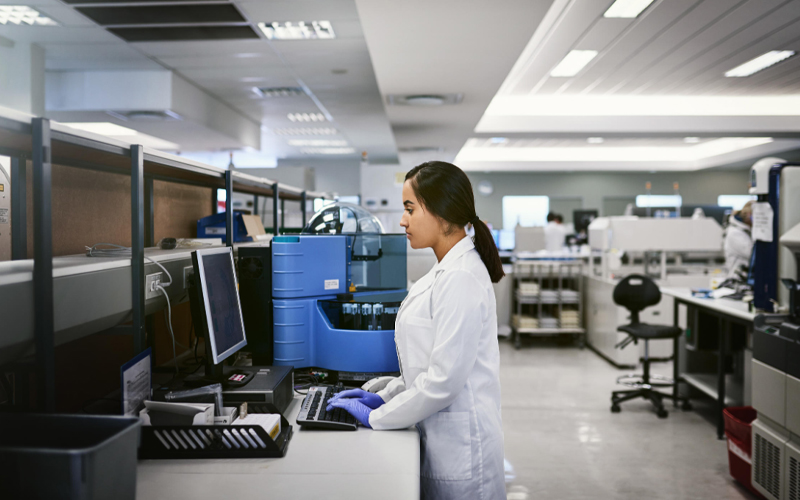Extended Reality (XR) has undergone significant advancements and is rapidly progressing across various fields. While XR initially found its stronghold in the gaming sector, its influence has now extended to diverse industries including retail, healthcare, manufacturing, and more.
What is Extended Reality?
Extended Reality is an umbrella term used for technologies like Virtual Reality (VR), Augmented Reality (AR), and Mixed Reality (MR).
All these are technologies that provide an immersive experience to the user by creating a virtual experience that replicates the real-life experience.
VR: An immersive experience for users with interactive real-world environment simulations. Users need VR goggles or other devices to interact in virtual reality.
AR: A combination of the real-world environment with computer-generated content to help users interact with virtual objects in a real-world environment.
MR: A seamless experience for users in an environment where virtual elements interact with the real world.
All these technologies hold enormous potential for the healthcare sector. And, XR has become the buzzword in healthcare. Data shows that the Global AR and VR market is expected to reach a whopping $10.82 billion by 2025 at a CAGR of 36.1% from 2019-2025.
Why is XR Disrupting the Healthcare Ecosystem?
XR bridges the gap between real and virtual worlds and can play a vital role in every aspect of healthcare. It enhances the quality of care and provides a great patient experience.
XR can:
- Enhance the processes involved in drug discovery and medical research
- Boost efficiency in pharmaceutical manufacturing
- Facilitate surgical training of medical students
- Enable early identification of life-threatening diseases.
- Facilitate advanced therapy and rehabilitation for chronic illnesses,
And do a lot more!
Let’s take a look at some of the use cases of XR in healthcare:
Accurate Diagnosis
Immersive technologies and 3D images help doctors identify the exact health condition of a patient. Conditions like arthritis, tumours, and fractures are some conditions that can be accurately diagnosed with the help of XR technologies.
Enhanced Surgical Procedures
XR technology provides pre-surgical data through realistic 3D visualisation helping doctors make accurate assessments before they begin the surgery.
Surgical Training
Medical trainees require hands-on experience in surgery if they want to become surgeons. However, hands-on experience with actual patients is a risky proposition. XR technologies solve this problem by offering immersive simulations where trainees can hone their surgical skills without any risk to anyone. XR offers medical trainees an opportunity to practice multiple times and learn from their mistakes without causing any harm.
Treatment for Mental Health Conditions
XR technologies have elevated the quality of treatment for mental health issues and psychiatric disorders. Therapists can leverage immersive technologies to create a virtual environment for patients where they can safely cope with their feelings and behaviour. Virtual Reality Exposure Therapy (VRET) and Augmented Reality Exposure Therapy (ARET) have been found to be highly effective in treating various mental conditions.
Collaborative Treatment
With XR, doctors can seamlessly collaborate from remote locations. Specialists do not have to travel to a specific location because all meetings can be conducted virtually. Hence, doctors can get expert opinions on diagnosis, surgical procedures, or any other requirement.
Teaching Medical Students
One area where XR can make a lot of difference in healthcare is teaching anatomy. The traditional methods of teaching anatomy depend on monotonous lectures and plastic models. Medical students are unable to visualise the human body parts using these methods. XR overcomes this shortcoming by providing an immersive experience and 3D models and thus a more comprehensive understanding of the human anatomy.
Manufacturing New Drugs
XR technologies are extremely useful during the pre-clinical phase and pharmaceutical research. By enabling the visualisation of molecular structures of target proteins, XR provides valuable insights that lead to more successful trials and launches of new drugs.
Final Takeaway
A few years ago, XR was perceived to be a technology meant only for the gaming industry. However, the digital transformation initiatives of organisations have made immersive technologies a dominant force across sectors.
XR is a boon to the healthcare industry because it enables healthcare professionals to provide quick, high-quality care to numerous patients at different locations. XR in healthcare has the potential to improve healthcare training, optimise costs, and boost patient satisfaction.
For organizations on the digital transformation journey, agility is key in responding to a rapidly changing technology and business landscape. Now more than ever, it is crucial to deliver and exceed on organizational expectations with a robust digital mindset backed by innovation. Enabling businesses to sense, learn, respond, and evolve like a living organism, will be imperative for business excellence going forward. A comprehensive, yet modular suite of services is doing exactly that. Equipping organizations with intuitive decision-making automatically at scale, actionable insights based on real-time solutions, anytime/anywhere experience, and in-depth data visibility across functions leading to hyper-productivity, Live Enterprise is building connected organizations that are innovating collaboratively for the future.







